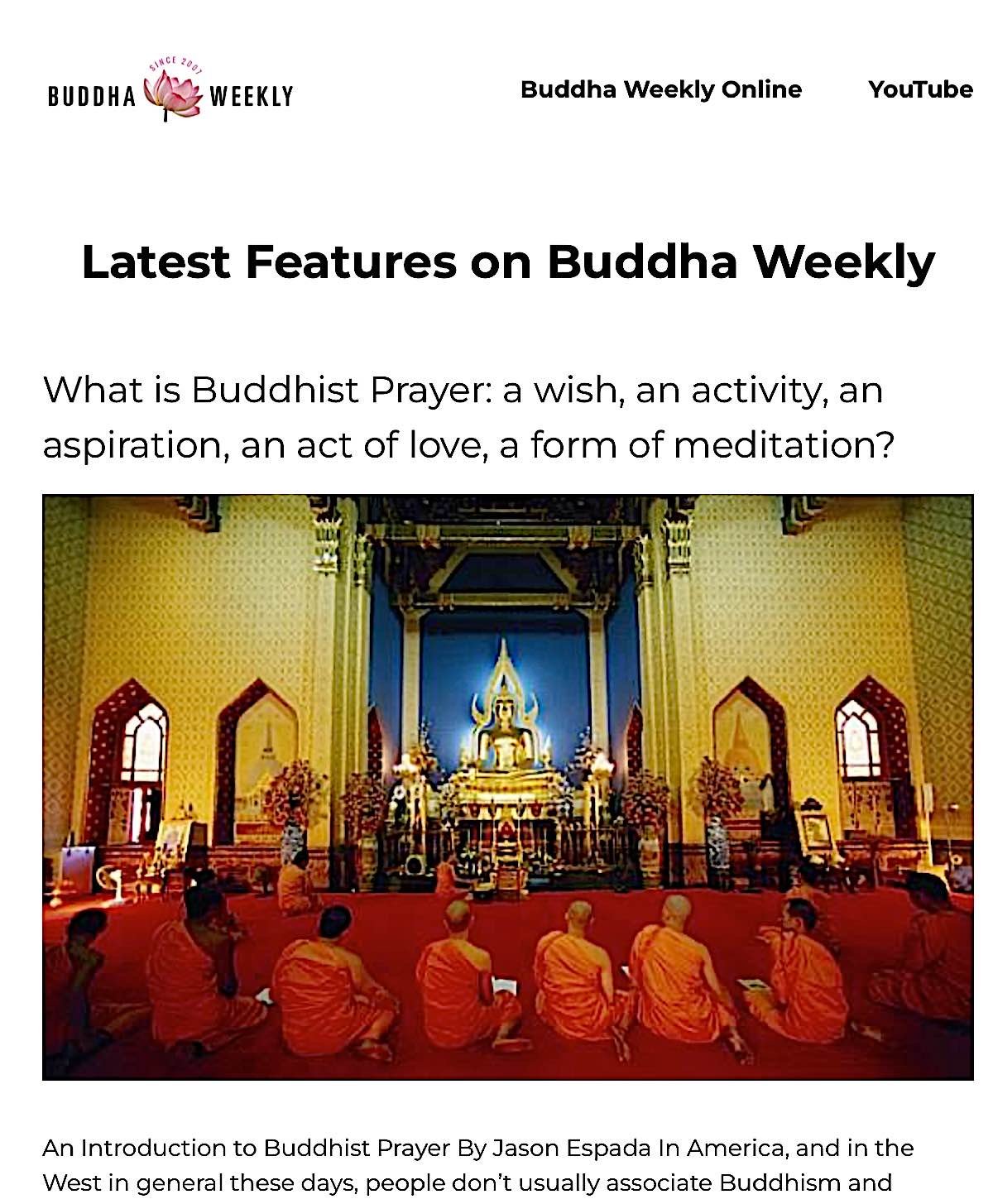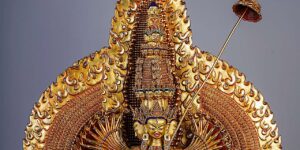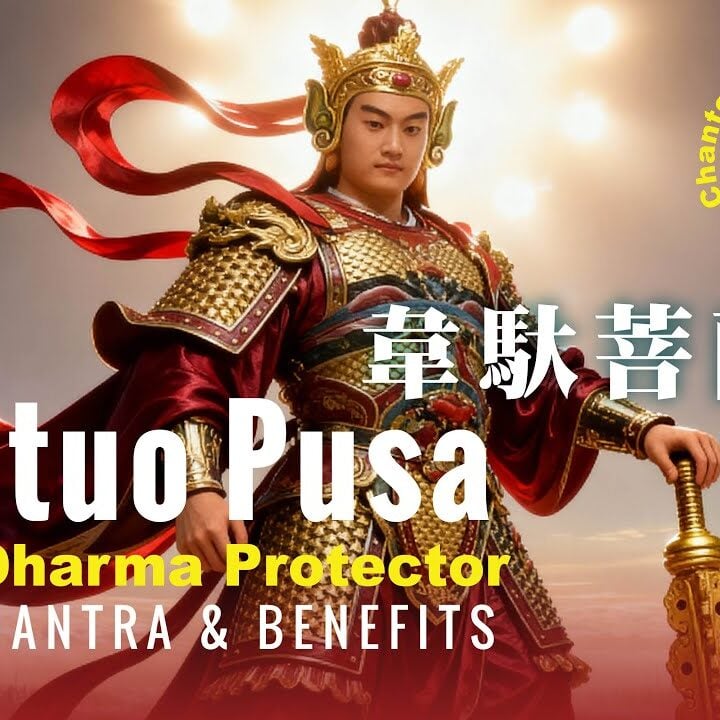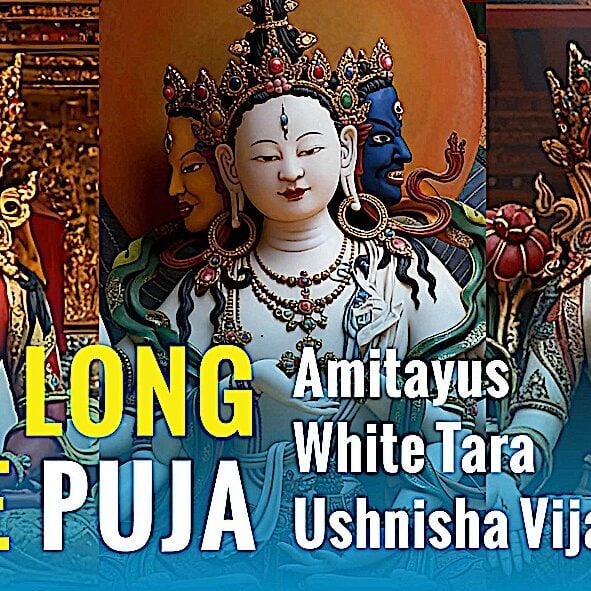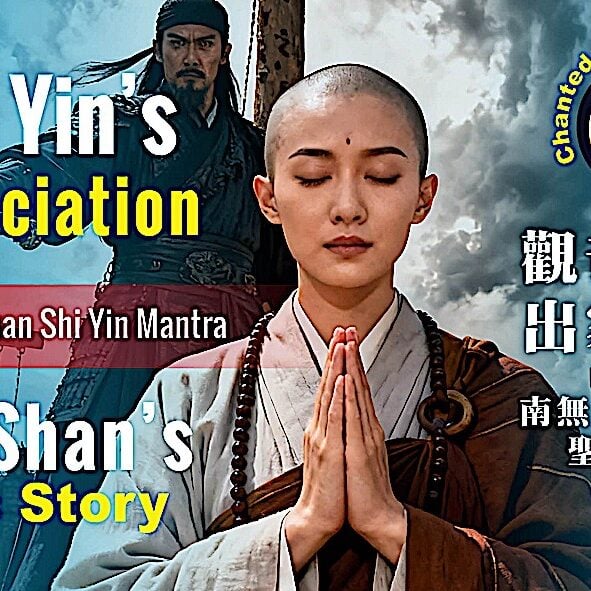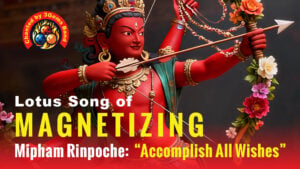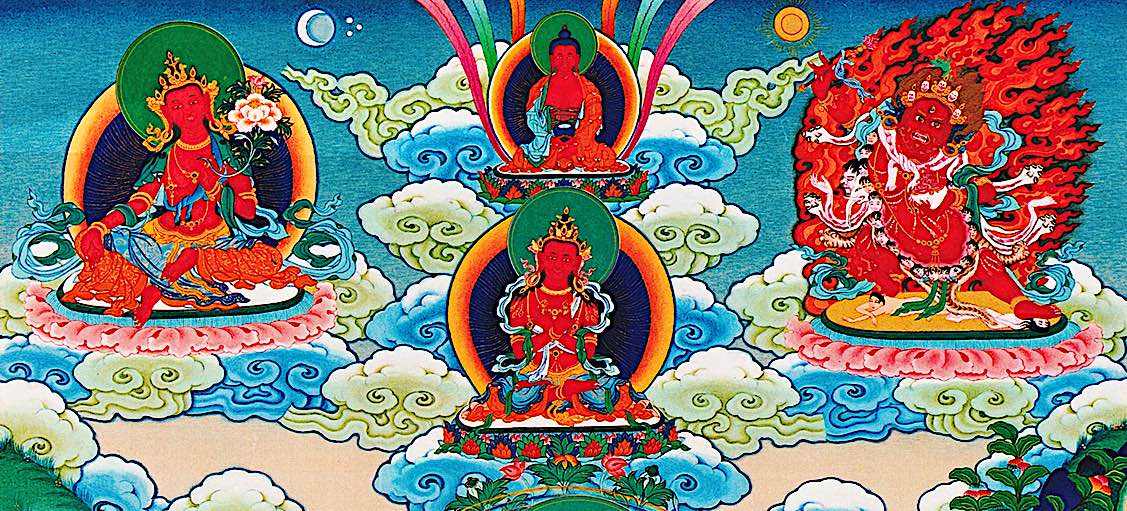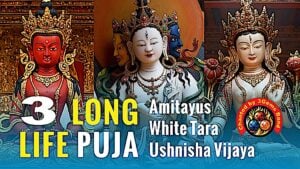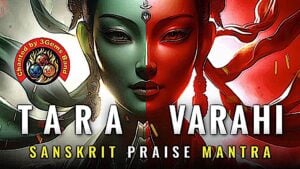Wei Tuo Pusa, Aspect of Vajrapani Bodhisattva, His Practice, Praise, Mantra 韋馱菩薩贊 #佛教誦經音樂
Why is the great Buddhist protector Wei Tuo Pusa venerated as Bodhisattva? Why do we always see Wei Tuo first in many Buddhist temples? Why did Shakyamuni Buddha ask Wei Tuo to protect the Dharma and Sangha after his Nirvana? Why is he considered the grand general or commander of the Heavenly armies of the Four Heavenly Kings? What is his mantra and what are its benefits? We answer these questions and end with a beautiful chanting of the traditional Morning Praise to the great protector Wei Tuo, followed by his Namo mantra, chanted by 3 Gems Band.
Wei Tuo Pusa is hard to miss. When you approach the doors of many Buddhist temples all over Asia, and increasingly around the world, you’ll see the handsome, towering statue of this grand general at the door. His face is kind and reassuring, but full of the power of Dharma faith. A person arriving at temple, perhaps someone lost, or someone in desperate need, or frightened, sees this reassuring face, and feels suddenly safe and protected. There are many stories of people lost, or fleeing for safety, and finding refuge in a temple under the statue of Wei Tuo Pusa.
(Full feature or transcript below video)
Video (English with multi language captions. Chinese narrated video below)
CONTENTS Video
00:00 Who is Wei Tuo Pusa and Why is He so Important?
01:22 The Grand Heavenly General Fighting Evil-Doers
02:18 Wei Tuo Pusa’s Oath to Shakyamuni Buddha
02:34 Golden Light Sutra and Is he Vajrapani?
03:35 Wei Tuo’s Grand Appearance: Kind but Strong
04:36 Wei Tuo, General of the Four Heavenly Kings
05:12 His Mantra Sends the Demons Running
05:32 Wei Tuo and Guan Shi Yin: Their Story
06:21 How to Honor or Practice Wei Tuo Pusa
08:06 Wei Tuo Pusa’s Praise in English
08:53 3 Gems Band sings: Wei Tuo Bodhisattva Praise 韋馱菩薩贊
Chinese Narration on Video (with CC in languages):
Why is this?
Wei Tuo Pusa is fulfilling his promise to Shakyamuni Buddha, to protect the Dharma and its practitioners. He is the best known of the 24 celestial guardians mentioned in the Golden Light Sutra.
One of his symbols is the vajra, which is often shown on the handle or blades of his sword. For this reason, he is most often considered, by many lineages to be none other than an aspect of Vajrapani Bodhisattva. His role as a protector of Shakyamuni Buddha, the Dharma and Buddhism is the same. They both have vajras as their symbol, and they are both considered the main protectors of Dharma in different lineages.
When he appears as Wei Tuo Pusa, he stands leaning on his powerful vajra sword of wisdom — or sometimes on a vajra spear — dressed as a great General of the Heavenly armies. His face is powerful, but kind, to reassure Dharma practitioners, but his posture and armor signify his resolute promise to protect the Dharma.
If we do not see him at the entrance, we’ll likely find him inside the shrine rooms or sacred spaces, almost always facing the statue of Buddha. He always faithfully faces the Buddha. Often, we make incense offerings and mantra requests to Wei Tuo Pusa first, before the Three Jewels refuge, to ensure all obstacles to our practice are removed. He is the obstacle remover.
In some temples he will have his own shrine. He is so beloved, as the tireless protector and guardian of Dharma, that he is almost always the first deity we see when we visit temple. Even though we hear often of the Four Heavenly Kings, it is their grand general, Wei Tuo Pusa who is best known and who carries the title of Bodhisattva or Pusa.
He is the active face of Dharma protectors in many lineages of Buddhism. It is Wei-to who stands in front of the Heavenly armies to defeat the Maras who plague practitioners with temptations, obstacles and doubts. Simply calling out his mantra sends these demons and doubts running.
Chanting his beautiful Namo praise mantra brings instant protection and safety. Simply chanting Namo Wei Tuo Pusa invites his protection and creates merit.
Wei Tuo Pusa is associated especially with Guan Shi Yin, the Bodhisattva of Compassion. According to the Precious Scroll of Fragrant Mountain, they met in an earlier incarnation, when Guanyin was the princess Miao Shan. According to the story, Wei Tuo loved Miao Shan but realized she was purely devoted to Dharma and compassion, and instead became her protector. Because of Wei Tuo’s purity and intention, he later incarnated as a Bodhisattva.
We can honour Wei Tuo Pusa in a variety of ways. Devotees may bow, offer incense, or recite prayers in his presence, at his shrine, or with him imagined in front of them. This creates merit and the causes for protection.
In daily practice, veneration can be as simple as three heartfelt bows or a short prayer, acknowledging his role as a protector and expressing gratitude for his vigilance. Some temples host special ceremonies dedicated to him, especially on his commemorative day, often observed in the lunar calendar on the 3rd day of the 6th lunar month.
One of the main ways Buddhists connect with Wei Tuo is through mantra recitation. The most commonly recited mantra is:
Namo Wei Tuo Pusa
We visualize seven colors of light surrounding us protectively when we chant. Even if we can’t visualize, just know that these Dharma shields are in place.
Wei Tuo Pusa, stands as a dedicated guardian of Buddhist teachings and practitioners. Through veneration, mantra recitation, and daily practices, Buddhists invite his protection and embody his qualities of courage and steadfastness.
For practice, it is traditional to begin offerings or the morning with Wei Tuo’s praise to ensure he removes our obstacles prior to our main practices. In the following chanted praise 3 Gems sings this praise. In English, if you prefer, this would be:
General Wei To, incarnation of Bodhisattva,
Protector of the Buddha-Dharma, with vows vast and profound,
Your precious vajra sword subdues the demonic hordes,
Your merit and virtue are incomparable,
Homage to the Bodhisattva of Universal Sight, Mahasattva!
Mahaprajnaparamita, Great Perfection of Wisdom.
This is followed by Namo Wei Tuo Pusa, meaning I prostrate to Wei Tuo Bodhisattva.
Chant along with 3 Gems Band as they sing the meditative, but powerful opening praise followed by Namo Wei Tuo Pusa mantra.
May all beings benefit.
More articles by this author
Search
Latest Features
Please support the "Spread the Dharma" mission as one of our heroic Dharma Supporting Members, or with a one-time donation.
Please Help Support the “Spread the Dharma” Mission!

Be a part of the noble mission as a supporting member or a patron, or a volunteer contributor of content.
The power of Dharma to help sentient beings, in part, lies in ensuring access to Buddha’s precious Dharma — the mission of Buddha Weekly. We can’t do it without you!
A non-profit association since 2007, Buddha Weekly published many feature articles, videos, and, podcasts. Please consider supporting the mission to preserve and “Spread the Dharma." Your support as either a patron or a supporting member helps defray the high costs of producing quality Dharma content. Thank you! Learn more here, or become one of our super karma heroes on Patreon.
Lee Kane
Author | Buddha Weekly
Lee Kane is the editor of Buddha Weekly, since 2007. His main focuses as a writer are mindfulness techniques, meditation, Dharma and Sutra commentaries, Buddhist practices, international perspectives and traditions, Vajrayana, Mahayana, Zen. He also covers various events.
Lee also contributes as a writer to various other online magazines and blogs.

